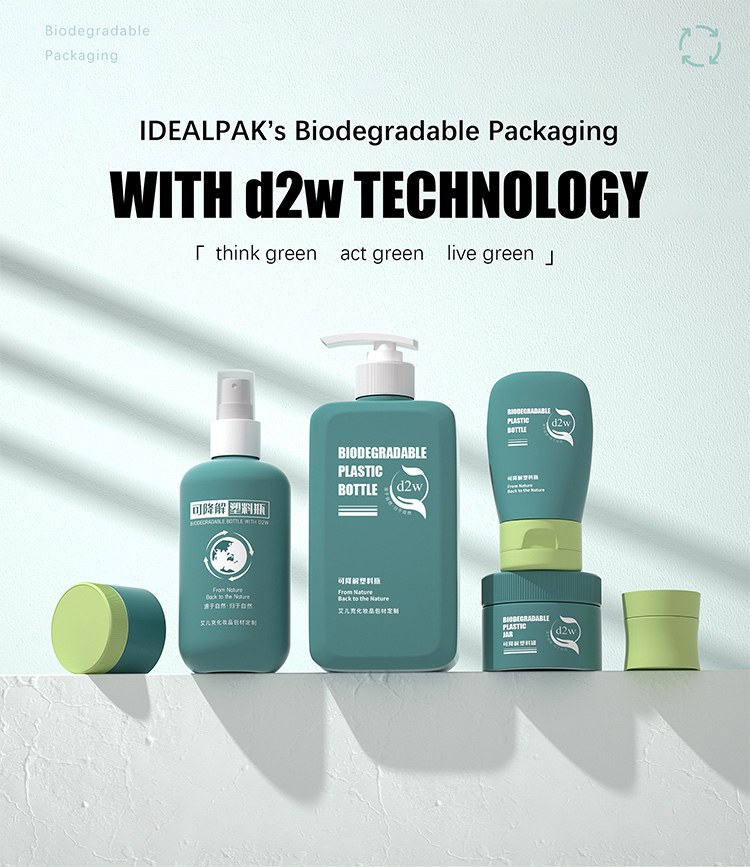Introduction
In the competitive world of cosmetics, packaging is just as important as the product itself. Not only does it need to protect the product, but it must also appeal to consumers and reflect the brand’s values. Among the various materials available, plastics are the most commonly used in cosmetic packaging due to their versatility, cost-effectiveness, and ability to be molded into different shapes and sizes.
However, choosing the right plastic material for cosmetic packaging is not as simple as picking the cheapest option. Different plastic materials offer different advantages, from PET’s recyclability to PP’s heat resistance. Understanding the properties of these plastics can help brands make informed decisions about packaging that aligns with their product’s needs and their sustainability goals.
In this article, we’ll dive into the most popular plastic materials used in cosmetic packaging, including PET, PE, PP, and acrylic, and explore why they continue to dominate the industry.
1. PET (Polyethylene Terephthalate)
What is PET?
PET (Polyethylene Terephthalate) is one of the most widely used plastics in the world, and for good reason. It is a clear, lightweight, and durable material that is often used for packaging liquid and gel-based cosmetics such as shampoos, body lotions, and facial cleansers.
Why is PET Popular?
- Clarity and Transparency: PET’s clear appearance enhances the visual appeal of products, making it an excellent choice for brands that want to showcase their products’ colors or textures. This is especially important for products like perfumes, skincare serums, and other liquid cosmetics that benefit from transparency.
- Durability: PET is resistant to impact and moisture, providing excellent protection for the contents. It is much more durable than glass, which makes it ideal for products that need to withstand frequent handling or travel.
- Recyclability: PET is widely recyclable, making it a more eco-friendly option compared to some other plastics. It is a part of the #1 plastic recycling category, and recycled PET (rPET) is increasingly being used in new packaging, further reducing the environmental impact.
- Sustainability and Industry Adoption: Many major cosmetic brands have switched to PET due to its environmental benefits. With increasing consumer demand for eco-friendly packaging, PET remains a preferred material due to its recyclability and low carbon footprint.
External Link Suggestion: PET’s recyclability and its role in sustainable packaging have been discussed in multiple studies. For an in-depth look at the future of “How to keep a sustainable PET recycling industry in Europe”
2. PE (Polyethylene)
What is PE?
PE (Polyethylene) is a versatile plastic material that is used in both high-density (HDPE) and low-density (LDPE) forms. It is often used in packaging tubes, bottles, and caps for a wide range of cosmetic products.
Why is PE Popular?
- Flexibility: One of the key benefits of PE is its flexibility. It is a soft and pliable material, which allows for more creative and unique packaging designs. It’s commonly used for squeeze tubes and flexible bottles, making it ideal for products that require easy dispensing, like lotions or sunscreens.
- Chemical Resistance: PE is highly resistant to chemicals, which makes it perfect for packaging a variety of cosmetic products, from lotions to creams that may contain a range of active ingredients.
- Cost-Effective: PE is one of the least expensive plastic materials, which makes it a cost-effective choice for manufacturers. This is especially important for brands that need to produce packaging at scale without sacrificing product safety or aesthetic quality.
- Recyclability: While HDPE is widely accepted by recycling programs, LDPE has lower recycling rates. However, advances in recycling technologies are making it easier to recycle both types of PE.
3. PP (Polypropylene)
What is PP?
PP (Polypropylene) is another highly durable plastic material that is commonly used for cosmetic packaging. It is known for its resistance to high temperatures and chemicals, making it ideal for products that require a bit more protection.
Why is PP Popular?
- Heat Resistance: PP can withstand higher temperatures than most plastics, which makes it ideal for packaging hot-fill products, such as certain hair treatments or products with high-temperature manufacturing processes.
- Chemical Resistance: Similar to PE, PP offers excellent chemical resistance, which is crucial for packaging products that contain volatile ingredients or need to be kept intact under harsh conditions.
- Lightweight and Durable: Despite being lightweight, PP is incredibly sturdy, ensuring that packaging holds up well during transportation and handling. This combination of durability and lightness makes it a preferred choice for packaging applications where both strength and weight are key considerations.
- Recyclability: Like PE, PP is also recyclable. However, it is not as widely accepted in recycling programs as PET, so it’s important for brands to ensure that their consumers have proper disposal and recycling guidance.
4. Acrylic
What is Acrylic?
Acrylic is a premium material often used for high-end cosmetic packaging. Known for its glass-like clarity, it is used in packaging for luxury beauty products such as perfumes, premium skincare, and lotions.
Why is Acrylic Popular?
- Luxurious Look: Acrylic provides a crystal-clear appearance that gives products a sophisticated, high-end look. It is often used in packaging for luxury cosmetic lines because of its ability to mimic the visual appeal of glass while being more durable.
- Durability: Acrylic is more durable than glass, making it less prone to breakage during shipping or handling. This is an important feature for products that require extra protection.
- Customizable: Acrylic is highly customizable in terms of shape and color, allowing brands to design unique and distinctive packaging that stands out on the shelves.
5. The Shift Towards Sustainable Plastic Packaging
As sustainability becomes a central theme in the cosmetic industry, more brands are exploring alternatives to traditional plastic materials. Recyclable plastics such as PET, HDPE, and PP remain at the forefront, but materials like bioplastics are also gaining traction. Bioplastics are derived from renewable sources and can be composted or recycled more efficiently than petroleum-based plastics.
To learn more about sustainable packaging, consider reading our blog on the role of bioplastics in cosmetic packaging, where we explore the potential of this emerging material to transform the packaging landscape.
Conclusion
When it comes to cosmetic packaging, selecting the right plastic material is essential for product protection, brand presentation, and sustainability. PET, PE, PP, and acrylic are the most popular plastic materials used in the industry today, each offering unique advantages. As consumers demand more sustainable solutions, brands must balance the benefits of these materials with eco-friendly innovations to stay competitive and responsible.
For more information on how to optimize your packaging, reach out to us at contact us.



